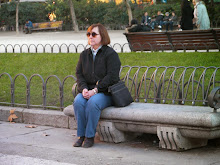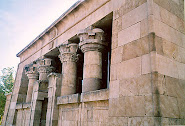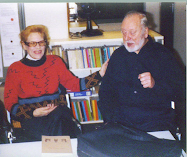Saturday, September 13, 2008
The Goddess Osun
The Kumari - From the Other Side
 From The Sunday Tribune of India
Sunday, September 14, 2008
Hope for the goddess
Nepal’s Kumaris, who are shunned and denied basic rights when they lose their ‘divine’ status, can now look forward to a better and normal future, thanks to a ruling by the country’s apex court, writes Sudeshna Sarkar
WHEN Pushpa Kamal Dahal Prachanda, chief of the Communist Party of Nepal (Maoist), the country’s former guerrilla party, was sworn in as the young Himalayan republic’s new prime minister, the event was hailed internationally as the climax to an amazing revolution that had ended the reign of the 239-year-old dynasty of the Shah kings, once regarded as incarnations of Vishnu.
Along with that momentous event, Pundevi Maharjan (30) also quietly ushered in another revolution in a country that has been ruled by tradition and strong religious beliefs. The young lawyer has won a battle against Nepal’s famous Kumari tradition, setting in motion a change that will in future end the myth of virgin goddesses.
"I come from the Shakya Bajracharya clan," Maharjan says. "They are Buddhists who were also the first inhabitants of the Kathmandu valley. Though Buddhists, it is the priests of this community who choose the Kumaris — Nepal’s living goddesses."
After Mt Everest, the highest peak in the world, the Buddhist shrines of Swayambhunath and Boudhanath, and the Hindu temple of Pashupati, the Kumari is probably the best known image of Nepal. The young girl wearing a crown and with a third eye painted on her forehead, who gazes out impassively from an intricately carved wooden window, draws tens of thousands of tourists as well as devotees every year.
Regarded as an incarnation of Taleju Bhawani, the goddess of power, as well as the protector of the royal family, the Kumari was believed to have divine powers. She is also the only living being before whom the kings of Nepal bowed in obeisance.
Nepal boasts of 11 Kumaris, who are chosen by priests from the Bajracharya community on the basis of certain criteria. The chosen one’s horoscope has to be compatible with the reigning king’s and she has to be free from any physical blemishes. The Kumari also has to be a prepubescent girl who loses her divine status once she begins menstruation. She is then succeeded by a new Kumari.
Once selected, the Kumari leaves her family to go and reside in the Kumari Ghar — the palace designated for her in Kathmandu — where she has her own retinue. She is not allowed to leave the palace on her own and she must not walk on the ground. The most important of the 11 Kumaris is taken out in a chariot and has a red carpet placed before her so that her feet don’t touch the ground.
"When I was in college, I began to marvel at the Kumaris," says Maharjan, who had filed a public interest litigation in the Supreme Court three years ago, saying that the Kumaris’ rights as children had been grossly violated.
Once they lost their divine status and had to leave the palace, most found it hard to assimilate. Some had no education and had to start school at the age of 11, when they were placed in the same class with five or six-year-olds. They were also the victims of superstitions, like the belief that if a man married a Kumari, he would die. But no one ever thought of the trauma a former Kumari undergoes.
A glaring example of the restrictions the Kumaris suffered is, Maharjan says, the case of Sajani Shakya, who until recently was the Kumari of Bhaktapur town. In an unprecedented move, her priests sacked the nine-year-old after she went to the US to attend a documentary festival that also screened a film on the Kumaris, including herself. Sajani’s priests said she had lost her holiness by going abroad and eating "impure" food.
After fighting the suit for two years, Maharjan got a shot in the arm when she joined the Forum for Women, Law and Development (FWLD), a leading NGO in Nepal that has been fighting for the abolition of anti-women laws and for protection of women. Nepal’s apex court recently ordered the government to protect the rights of the Kumaris.
"Though the convention of child rights and interim constitution of Nepal have guaranteed minor girls the right to education and health, only some Kumaris enjoy these rights," judges Balaram K.C. and Top Bahadur Magar said. "There should be no bar on Kumaris going to school and enjoying health-related rights. They should not be treated as bonded labourers and there should be no restriction on their free movement."
The judges have ordered the government to form a five-member committee from related ministries that would study the condition of the Kumaris and submit its report within a year. In addition, they have asked the Ministry for Culture, Tourism and Civil Aviation to draw up a second committee to recommend schemes for providing former Kumaris with social security.
Maharjan says she faced ostracism and harassment from her community when she filed the suit. She was accused of trying to humiliate her own people and of destroying a tradition that was the backbone of national culture. "I did not seek to have the Kumari tradition abolished," she says spiritedly. "I only want it to be modernised and freed from harmful practices. Instead of being treated like divine beings, the Kumaris should be seen as cultural icons that are unique to Nepal."
Sapana Pradhan Malla, one of the founders of FWLD and currently a Member of Parliament (MP), who has been entrusted with the task of drafting a new constitution for Nepal, says the community should be asked to modernise the Kumari tradition.
"There are other traditions related to women and religion that are harmful to women," she says. "Like Deuki (akin to India’s devdasi tradition in which a young girl is offered to a god and who finally ends up as a sex worker) and Jhuma (the tradition of a Buddhist family offering at least one girl child to become a nun without considering her wishes). While the Kumari is not like that, yet, it has to be viewed with different eyes."
"Nepalis decided to abolish monarchy," says Janardan Sharma, one of the deputy commanders of the People’s Liberation Army, the Maoists’ guerrilla army, who is now a legislator. "We need to abolish all institutions associated with the crown. There is no need for Kumaris, Jhumas or Deukis."
But the moderates in the party have decided to skirt the issue for now, fearing a public outcry. "The Kumari is not just associated with the king as his protective deity," says Dinanath Sharma, another Maoist lawmaker. "She is also a cultural symbol." — WFS
From The Sunday Tribune of India
Sunday, September 14, 2008
Hope for the goddess
Nepal’s Kumaris, who are shunned and denied basic rights when they lose their ‘divine’ status, can now look forward to a better and normal future, thanks to a ruling by the country’s apex court, writes Sudeshna Sarkar
WHEN Pushpa Kamal Dahal Prachanda, chief of the Communist Party of Nepal (Maoist), the country’s former guerrilla party, was sworn in as the young Himalayan republic’s new prime minister, the event was hailed internationally as the climax to an amazing revolution that had ended the reign of the 239-year-old dynasty of the Shah kings, once regarded as incarnations of Vishnu.
Along with that momentous event, Pundevi Maharjan (30) also quietly ushered in another revolution in a country that has been ruled by tradition and strong religious beliefs. The young lawyer has won a battle against Nepal’s famous Kumari tradition, setting in motion a change that will in future end the myth of virgin goddesses.
"I come from the Shakya Bajracharya clan," Maharjan says. "They are Buddhists who were also the first inhabitants of the Kathmandu valley. Though Buddhists, it is the priests of this community who choose the Kumaris — Nepal’s living goddesses."
After Mt Everest, the highest peak in the world, the Buddhist shrines of Swayambhunath and Boudhanath, and the Hindu temple of Pashupati, the Kumari is probably the best known image of Nepal. The young girl wearing a crown and with a third eye painted on her forehead, who gazes out impassively from an intricately carved wooden window, draws tens of thousands of tourists as well as devotees every year.
Regarded as an incarnation of Taleju Bhawani, the goddess of power, as well as the protector of the royal family, the Kumari was believed to have divine powers. She is also the only living being before whom the kings of Nepal bowed in obeisance.
Nepal boasts of 11 Kumaris, who are chosen by priests from the Bajracharya community on the basis of certain criteria. The chosen one’s horoscope has to be compatible with the reigning king’s and she has to be free from any physical blemishes. The Kumari also has to be a prepubescent girl who loses her divine status once she begins menstruation. She is then succeeded by a new Kumari.
Once selected, the Kumari leaves her family to go and reside in the Kumari Ghar — the palace designated for her in Kathmandu — where she has her own retinue. She is not allowed to leave the palace on her own and she must not walk on the ground. The most important of the 11 Kumaris is taken out in a chariot and has a red carpet placed before her so that her feet don’t touch the ground.
"When I was in college, I began to marvel at the Kumaris," says Maharjan, who had filed a public interest litigation in the Supreme Court three years ago, saying that the Kumaris’ rights as children had been grossly violated.
Once they lost their divine status and had to leave the palace, most found it hard to assimilate. Some had no education and had to start school at the age of 11, when they were placed in the same class with five or six-year-olds. They were also the victims of superstitions, like the belief that if a man married a Kumari, he would die. But no one ever thought of the trauma a former Kumari undergoes.
A glaring example of the restrictions the Kumaris suffered is, Maharjan says, the case of Sajani Shakya, who until recently was the Kumari of Bhaktapur town. In an unprecedented move, her priests sacked the nine-year-old after she went to the US to attend a documentary festival that also screened a film on the Kumaris, including herself. Sajani’s priests said she had lost her holiness by going abroad and eating "impure" food.
After fighting the suit for two years, Maharjan got a shot in the arm when she joined the Forum for Women, Law and Development (FWLD), a leading NGO in Nepal that has been fighting for the abolition of anti-women laws and for protection of women. Nepal’s apex court recently ordered the government to protect the rights of the Kumaris.
"Though the convention of child rights and interim constitution of Nepal have guaranteed minor girls the right to education and health, only some Kumaris enjoy these rights," judges Balaram K.C. and Top Bahadur Magar said. "There should be no bar on Kumaris going to school and enjoying health-related rights. They should not be treated as bonded labourers and there should be no restriction on their free movement."
The judges have ordered the government to form a five-member committee from related ministries that would study the condition of the Kumaris and submit its report within a year. In addition, they have asked the Ministry for Culture, Tourism and Civil Aviation to draw up a second committee to recommend schemes for providing former Kumaris with social security.
Maharjan says she faced ostracism and harassment from her community when she filed the suit. She was accused of trying to humiliate her own people and of destroying a tradition that was the backbone of national culture. "I did not seek to have the Kumari tradition abolished," she says spiritedly. "I only want it to be modernised and freed from harmful practices. Instead of being treated like divine beings, the Kumaris should be seen as cultural icons that are unique to Nepal."
Sapana Pradhan Malla, one of the founders of FWLD and currently a Member of Parliament (MP), who has been entrusted with the task of drafting a new constitution for Nepal, says the community should be asked to modernise the Kumari tradition.
"There are other traditions related to women and religion that are harmful to women," she says. "Like Deuki (akin to India’s devdasi tradition in which a young girl is offered to a god and who finally ends up as a sex worker) and Jhuma (the tradition of a Buddhist family offering at least one girl child to become a nun without considering her wishes). While the Kumari is not like that, yet, it has to be viewed with different eyes."
"Nepalis decided to abolish monarchy," says Janardan Sharma, one of the deputy commanders of the People’s Liberation Army, the Maoists’ guerrilla army, who is now a legislator. "We need to abolish all institutions associated with the crown. There is no need for Kumaris, Jhumas or Deukis."
But the moderates in the party have decided to skirt the issue for now, fearing a public outcry. "The Kumari is not just associated with the king as his protective deity," says Dinanath Sharma, another Maoist lawmaker. "She is also a cultural symbol." — WFS
Tomb of Eve?
 An interesting money-making scam for the local community... (Image: Eve, the Serpent, and Death, by Hans Baldung Grien c. 1520-25 (National Gallery of Canada, Ottawa).
From The New York Times
By THE ASSOCIATED PRESS
Published: September 10, 2008
Filed at 10:09 a.m. ET
JIDDAH, Saudi Arabia (AP) -- On a sweltering August morning, a small group of Iranians crowded outside the green metal door of a cemetery. They wanted to go in to look at the remains of one particular tomb: the tomb of biblical Eve.
Like hundreds of Muslims who visit Saudi Arabia for pilgrimage in nearby Mecca, the Iranians had heard the legend that Eve was buried in that spot. The two blue signs inscribed with ''The Graveyard of our mother Eve'' flanking the cemetery entrance appeared to add credibility to a story passed on by generations of Saudis but never scientifically proven.
''We hear this is the tomb of Eve,'' said Minoo Ghadimkhani, 45. ''That is why we want to go in.''
There is no archaeological evidence old enough to authenticate the story of Eve's burial in Jiddah, according to many Bible experts. But that hasn't kept the legend from persisting.
Some say that the city's name, when pronounced as ''Jaddah'' -- an Arabic word that means grandmother -- is a reference to Eve. No one really knows how the story originated, and many in this Red Sea port city dismiss it as a myth.
''It's a legend, but it is one mentioned by many scholars,'' said Sami Nawar, general director for culture and tourism. Nawar, an expert on the history of old Jiddah, likes to lace a bit of the legend into his presentations on the city to visiting foreign dignitaries and journalists.
''Jiddah is the most feminine city in the whole world because it has Eve,'' Nawar says.
The Quran, Islam's holy book, talks about Adam and Eve's expulsion from paradise after eating from the fruit of the forbidden tree. It does not say where they appeared on earth.
But Arab tradition puts Adam in the holy city of Mecca, which is 70 kilometers (43 miles) east of Jiddah, where God ordered him to build the Kaaba, the sacred stone structure that Muslims face during their five daily prayers, according to Nawar.
God then told Adam to go to a hill in Mecca to repent for his sins, said Nawar. After he repented, God sent him Eve, and the hill became known as Mount Arafat, from the Arabic word that means to know, he added. That story places Eve, Hawwa in Arabic, in the vicinity of Jiddah, which is the entry point for Muslim pilgrims to Mecca. It could explain how the legend of her burial began.
Arab and Western historians and travelers have described a tomb outside the walls of old Jiddah that they referred to as Eve's Graveyard.
Historian Hatoon al-Fassi said 9th century Mecca historian al-Fakihi reported that two of Prophet Muhammad's companions, Ibn Abbas and Ibn Massoud, mentioned Eve's tomb. The prophet died in 623.
Writing about Jiddah in his ''Travels,'' Ibn Jubayr, a 12th century geographer, traveler and poet, born in Valencia, then the seat of an Arab emirate, says that ''in it is a place having an ancient and lofty dome, which is said to have been the lodging place of Eve, the mother of mankind, God's blessing upon her when on her way to (Mecca).'' The passage was quoted by the Arab News, a Saudi paper.
The tomb no longer exists. And it's not clear how it was destroyed. Those who have been inside the cemetery say that in its place is a row of unmarked tombs, and there's nothing to indicate the tomb had been there. (The Wahhabi strain of Islam bans the marking of tombs, and women in the Saudi kingdom are barred from entering cemeteries.)
William Dever, a professor emeritus of Near Eastern studies at the University of Arizona and a prominent U.S. archaeologist, said there just isn't any archaeological evidence going back far enough to back up the claims.
''The problem is that these are all legends, these are all myths and we can't date them,'' said Dever, who specializes in the history of Israel and Near East in biblical times. ''My guess is the story could go back two or three thousand years, but we don't have any archaeological proof.''
''There are lots of traditional tombs of saints of various kinds in the Middle East,'' he added. ''But they are never excavated or investigated scientifically.''
Asked if he had heard of any other final resting place for Eve, Dever said, ''No. There are tombs of Abraham all over the place, but I don't honestly know in Israel or the West Bank or Jordan of any Eve tomb in these places.''
On the quiet street of the cemetery, which faces low-rise, rundown buildings, the Eve legend remains alive even though those who grew up with the story don't really believe it.
Ahmed Bakoudij, a 32-year-old mechanic, said he called his garage ''Hawwa's Garage'' despite his skepticism.
''I've been hearing about Hawwa's grave since I was a kid,'' said Bakoudij. ''But no one believes it. I have to see it with my own eyes to believe it.'' ''But,'' he added, ''if I ever have kids, I'll pass on the legend to them.''
Grocer Saleh Ba-Aqeel said hundreds of Muslim pilgrims from Iran, Indonesia and other countries visit the cemetery, especially before and after the annual hajj pilgrimage.
''When they come and ask me if Eve is really buried here, I tell them, 'God only knows,''' said Ba-Aqeel.
An interesting money-making scam for the local community... (Image: Eve, the Serpent, and Death, by Hans Baldung Grien c. 1520-25 (National Gallery of Canada, Ottawa).
From The New York Times
By THE ASSOCIATED PRESS
Published: September 10, 2008
Filed at 10:09 a.m. ET
JIDDAH, Saudi Arabia (AP) -- On a sweltering August morning, a small group of Iranians crowded outside the green metal door of a cemetery. They wanted to go in to look at the remains of one particular tomb: the tomb of biblical Eve.
Like hundreds of Muslims who visit Saudi Arabia for pilgrimage in nearby Mecca, the Iranians had heard the legend that Eve was buried in that spot. The two blue signs inscribed with ''The Graveyard of our mother Eve'' flanking the cemetery entrance appeared to add credibility to a story passed on by generations of Saudis but never scientifically proven.
''We hear this is the tomb of Eve,'' said Minoo Ghadimkhani, 45. ''That is why we want to go in.''
There is no archaeological evidence old enough to authenticate the story of Eve's burial in Jiddah, according to many Bible experts. But that hasn't kept the legend from persisting.
Some say that the city's name, when pronounced as ''Jaddah'' -- an Arabic word that means grandmother -- is a reference to Eve. No one really knows how the story originated, and many in this Red Sea port city dismiss it as a myth.
''It's a legend, but it is one mentioned by many scholars,'' said Sami Nawar, general director for culture and tourism. Nawar, an expert on the history of old Jiddah, likes to lace a bit of the legend into his presentations on the city to visiting foreign dignitaries and journalists.
''Jiddah is the most feminine city in the whole world because it has Eve,'' Nawar says.
The Quran, Islam's holy book, talks about Adam and Eve's expulsion from paradise after eating from the fruit of the forbidden tree. It does not say where they appeared on earth.
But Arab tradition puts Adam in the holy city of Mecca, which is 70 kilometers (43 miles) east of Jiddah, where God ordered him to build the Kaaba, the sacred stone structure that Muslims face during their five daily prayers, according to Nawar.
God then told Adam to go to a hill in Mecca to repent for his sins, said Nawar. After he repented, God sent him Eve, and the hill became known as Mount Arafat, from the Arabic word that means to know, he added. That story places Eve, Hawwa in Arabic, in the vicinity of Jiddah, which is the entry point for Muslim pilgrims to Mecca. It could explain how the legend of her burial began.
Arab and Western historians and travelers have described a tomb outside the walls of old Jiddah that they referred to as Eve's Graveyard.
Historian Hatoon al-Fassi said 9th century Mecca historian al-Fakihi reported that two of Prophet Muhammad's companions, Ibn Abbas and Ibn Massoud, mentioned Eve's tomb. The prophet died in 623.
Writing about Jiddah in his ''Travels,'' Ibn Jubayr, a 12th century geographer, traveler and poet, born in Valencia, then the seat of an Arab emirate, says that ''in it is a place having an ancient and lofty dome, which is said to have been the lodging place of Eve, the mother of mankind, God's blessing upon her when on her way to (Mecca).'' The passage was quoted by the Arab News, a Saudi paper.
The tomb no longer exists. And it's not clear how it was destroyed. Those who have been inside the cemetery say that in its place is a row of unmarked tombs, and there's nothing to indicate the tomb had been there. (The Wahhabi strain of Islam bans the marking of tombs, and women in the Saudi kingdom are barred from entering cemeteries.)
William Dever, a professor emeritus of Near Eastern studies at the University of Arizona and a prominent U.S. archaeologist, said there just isn't any archaeological evidence going back far enough to back up the claims.
''The problem is that these are all legends, these are all myths and we can't date them,'' said Dever, who specializes in the history of Israel and Near East in biblical times. ''My guess is the story could go back two or three thousand years, but we don't have any archaeological proof.''
''There are lots of traditional tombs of saints of various kinds in the Middle East,'' he added. ''But they are never excavated or investigated scientifically.''
Asked if he had heard of any other final resting place for Eve, Dever said, ''No. There are tombs of Abraham all over the place, but I don't honestly know in Israel or the West Bank or Jordan of any Eve tomb in these places.''
On the quiet street of the cemetery, which faces low-rise, rundown buildings, the Eve legend remains alive even though those who grew up with the story don't really believe it.
Ahmed Bakoudij, a 32-year-old mechanic, said he called his garage ''Hawwa's Garage'' despite his skepticism.
''I've been hearing about Hawwa's grave since I was a kid,'' said Bakoudij. ''But no one believes it. I have to see it with my own eyes to believe it.'' ''But,'' he added, ''if I ever have kids, I'll pass on the legend to them.''
Grocer Saleh Ba-Aqeel said hundreds of Muslim pilgrims from Iran, Indonesia and other countries visit the cemetery, especially before and after the annual hajj pilgrimage.
''When they come and ask me if Eve is really buried here, I tell them, 'God only knows,''' said Ba-Aqeel.
Chess on Television
A Disappointing Loss for Koneru
- Humpy out of world championship (9/12/08) - Grandmaster Koneru Humpy bowed out of the World Women Chess Championship succumbing to 14-year old Yifan Hao of China in the blitz tiebreak games of the semi-finals
- Yifan in final (9/13/08) - Chinese prodigy Hou Yifan inflicted a heart-breaking twin-defeat on second seed K. Humpy in the two five-minute blitz games for a 4-2 victory in the semifinals of the Women’s World chess championship...
It seems probable at this point that Hou will overtake Koneru on the women's ratings list by the end of 2008 and will storm toward 2700, much as another teen "prodigy" has - Magnus Carlsen (now storming toward 2800). Will Hou be unstoppable? If she wins the women's title, will she gun for the "men's" title? Hey Topalov, Aronian, Carlsen, Anand, et al., watch out boys!
Well, okay, maybe not. I don't think Hou is the best female player in the world - she's still extremely unseasoned and she hasn't had enough experience playing against higher-rated male players. Her results over the past couple of years have been highly inconsistent. Let's see what happens over the next three years or so.
Accused Killers of Chess Player on Trial
Friday, September 12, 2008
Friday Night Miscellany
Thursday, September 11, 2008
Indians Training Hard for 2008 Chess Olympiad
Gruesome Evidence of Human Sacrifice
New Treasures Uncovered at Grecian Burial Site
 Greece unearths treasures at Alexander's birthplace
Thu Sep 11, 2008 2:15pm EDT
ATHENS (Reuters) - Archaeologists have unearthed gold jewellery, weapons and pottery at an ancient burial site near Pella in northern Greece, the birthplace of Alexander the Great, the culture ministry said on Thursday.
The excavations at the vast cemetery uncovered 43 graves dating from 650-279 BC which shed light on the early development of the Macedonian kingdom, which had an empire that stretched as far as India under Alexander's conquests.
Among the most interesting discoveries were the graves of 20 warriors dating to the late Archaic period, between 580 and 460 BC, the ministry said in a statement.
Some were buried in bronze helmets alongside iron swords and knives. Their eyes, mouths and chests were covered in gold foil richly decorated with drawings of lions and other animals symbolizing royal power.
"The discovery is rich in historical importance, shedding light on Macedonian culture during the Archaic period," Pavlos Chrysostomou, who headed the eight-year project that investigated a total of 900 graves, told Reuters.
Pavlas said the graves confirmed evidence of an ancient Macedonian society organized along militaristic lines and with overseas trade as early as the second half of the seventh century BC.
Among the excavated graves, the team also found 11 women from the Archaic period, with gold and bronze necklaces, earrings and broaches. Nine of the graves dated to the late classical or early Hellenistic period, around the death of Alexander the Great in 323 BC. [This is a bit confusing; the photo above seems to describe this archaic period jewelry. Did 11 graves date to the archaic period? Or were there a total of 11 graves, 9 of which date to the late classical or early Hellenistic period? There's about 500 years difference!]
Alexander, whose father Philip II unified the city states of mainland Greece, conquered most of the world known to the ancient Greeks before dying at the age of 32 in Babylon. Educated by the ancient Greek philosopher Aristotle, Alexander was never defeated in battle.
Reporting by Daniel Flynn and Renee Maltezou; editing by Elizabeth Piper)
Greece unearths treasures at Alexander's birthplace
Thu Sep 11, 2008 2:15pm EDT
ATHENS (Reuters) - Archaeologists have unearthed gold jewellery, weapons and pottery at an ancient burial site near Pella in northern Greece, the birthplace of Alexander the Great, the culture ministry said on Thursday.
The excavations at the vast cemetery uncovered 43 graves dating from 650-279 BC which shed light on the early development of the Macedonian kingdom, which had an empire that stretched as far as India under Alexander's conquests.
Among the most interesting discoveries were the graves of 20 warriors dating to the late Archaic period, between 580 and 460 BC, the ministry said in a statement.
Some were buried in bronze helmets alongside iron swords and knives. Their eyes, mouths and chests were covered in gold foil richly decorated with drawings of lions and other animals symbolizing royal power.
"The discovery is rich in historical importance, shedding light on Macedonian culture during the Archaic period," Pavlos Chrysostomou, who headed the eight-year project that investigated a total of 900 graves, told Reuters.
Pavlas said the graves confirmed evidence of an ancient Macedonian society organized along militaristic lines and with overseas trade as early as the second half of the seventh century BC.
Among the excavated graves, the team also found 11 women from the Archaic period, with gold and bronze necklaces, earrings and broaches. Nine of the graves dated to the late classical or early Hellenistic period, around the death of Alexander the Great in 323 BC. [This is a bit confusing; the photo above seems to describe this archaic period jewelry. Did 11 graves date to the archaic period? Or were there a total of 11 graves, 9 of which date to the late classical or early Hellenistic period? There's about 500 years difference!]
Alexander, whose father Philip II unified the city states of mainland Greece, conquered most of the world known to the ancient Greeks before dying at the age of 32 in Babylon. Educated by the ancient Greek philosopher Aristotle, Alexander was never defeated in battle.
Reporting by Daniel Flynn and Renee Maltezou; editing by Elizabeth Piper)
2008 Women's World Chess Championship
Wednesday, September 10, 2008
Temple of Athena Found in Turkey
Russia's Actions Have Consequences
2008 Women's World Chess Championship
- I think Hou is far too young to win this title, I don't care how "good at chess" she is; she's not ready to handle it.
- I don't think that Kosteniuk deserves to win this year, having sat out too many events and not performing all that well in the ones she played in! It seems she did some kind of MONDO prep and training for this event, which is all fine and good. But does being the champion only mean that you train like hell for six weeks before the event and sluff off before and after? I think being a champion requires more commitment than Kosteniuk is willing to give.
- I have followed Koneru's career since 1999, nearly 10 years! For the first several years of my advent onto the internet and into chess and the women who play the game at this level, Pia Cramling was absent. I did not see her name start to crop up in chess tournaments again until 2004 and then, it was very sporadic. It's only since 2006 that she's really started playing again (more events each year), the way she used to do in the "old days" - before marriage and children. I'm really torn as to whom I'm rooting for at this point (since my American players have been eliminated). On the one hand, I really want Koneru to win; on the other hand, I think it would be absolutely fabulous for Cramling to win the title so many years after earning her GM title and showing that yes, a 45 year old mom CAN do this.
- By expressing these thoughts I don't mean to take anything away from Hou and Kosteniuk as chessplayers; I'm trying to balance competing emotions and preferences honed over the course of many more years than any of the final four can boast, so I'm leaning toward the player who have shown the most commitment to the process (Koneru) and the player who has the most overall experience (Cramling).
What will happen tomorrow? I've no idea, darlings! Stay tuned!
Monday, September 8, 2008
2008 Hales Corners Challenge
EU Individual Open Chess Championships 2008
Marostica: Living Chess Game
2008 Women's World Chess Championship
Sunday, September 7, 2008
Humpy crushes Shen Yang; semis beckon
7,000 Year Old Female Icon Discovered
 Archaeologists find unique 7000-year-old statue
By ČTK / Published 5 September 2008
Masovice, South Moravia, Sept 4 (CTK) - Czech archaeologists have uncovered a torso of a unique female statue created about 7000 years ago near Masovice, which is the second similar find in this locality, Zdenek Cizmar, head of the archaeological research, told CTK Thursday.
The woman's statue found in the area last summer was given the name "Hedvika of Masovice," while "her sister" is called "Johanka," according to the female names in the calendar on the days when the artifacts were found, Cizmar added.
"Though the statues come from the same period, each of them is different and exceptional," Cizmar said.
Both sculptures, created by people of the Moravian Painted Ceramic culture, probably served as idols, symbolising life and fertility.
The lower part of the half-a-metre tall "Hedvika" statue is the oldest sculpture of such a large size found in central Europe.
The torso of "Johanka," measuring "mere" 35 centimetres, consists of four fragments of the body that were put together. The legs are missing.
"It has a realistically shaped face. Distinctive ears with holes are also interesting features. Hands, chest and lap are very well apparent. Moreover, Johanka was completely white," said Cizmar.
He added that the statue was polished with a resin base covered with a white colour finish.
Masovice is a significant archaeological site where remains of prehistorical settlements as well as a high number of artifacts have been found.
Among other rarities from the locality is the "Masovice rondel," of which a double circular ditch with a 110 metres in diameter has been preserved. It served as a ritual place and possibly as a calendar.
Czech archaeologists, slightly exaggerating, call it a Moravian predecessor of the famous Stonehange in Britain.
Archaeologists find unique 7000-year-old statue
By ČTK / Published 5 September 2008
Masovice, South Moravia, Sept 4 (CTK) - Czech archaeologists have uncovered a torso of a unique female statue created about 7000 years ago near Masovice, which is the second similar find in this locality, Zdenek Cizmar, head of the archaeological research, told CTK Thursday.
The woman's statue found in the area last summer was given the name "Hedvika of Masovice," while "her sister" is called "Johanka," according to the female names in the calendar on the days when the artifacts were found, Cizmar added.
"Though the statues come from the same period, each of them is different and exceptional," Cizmar said.
Both sculptures, created by people of the Moravian Painted Ceramic culture, probably served as idols, symbolising life and fertility.
The lower part of the half-a-metre tall "Hedvika" statue is the oldest sculpture of such a large size found in central Europe.
The torso of "Johanka," measuring "mere" 35 centimetres, consists of four fragments of the body that were put together. The legs are missing.
"It has a realistically shaped face. Distinctive ears with holes are also interesting features. Hands, chest and lap are very well apparent. Moreover, Johanka was completely white," said Cizmar.
He added that the statue was polished with a resin base covered with a white colour finish.
Masovice is a significant archaeological site where remains of prehistorical settlements as well as a high number of artifacts have been found.
Among other rarities from the locality is the "Masovice rondel," of which a double circular ditch with a 110 metres in diameter has been preserved. It served as a ritual place and possibly as a calendar.
Czech archaeologists, slightly exaggerating, call it a Moravian predecessor of the famous Stonehange in Britain.





































